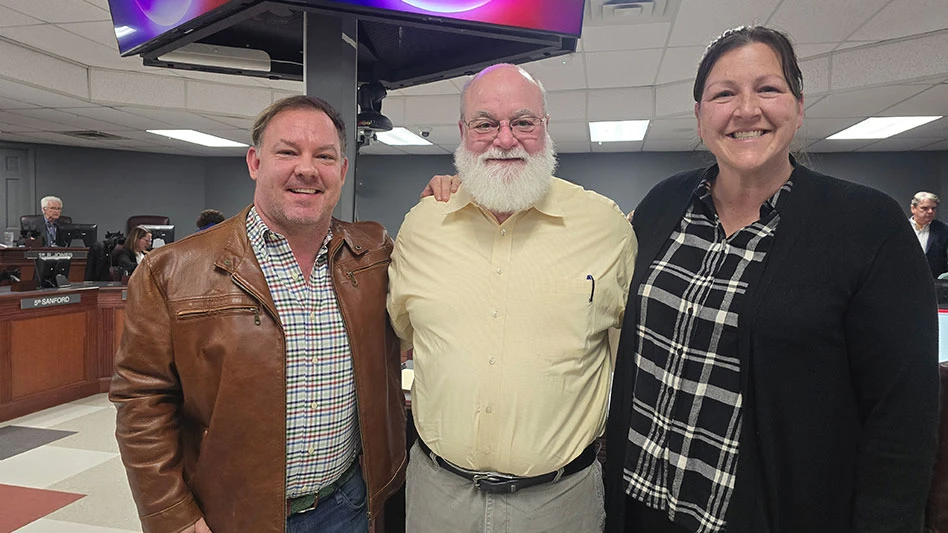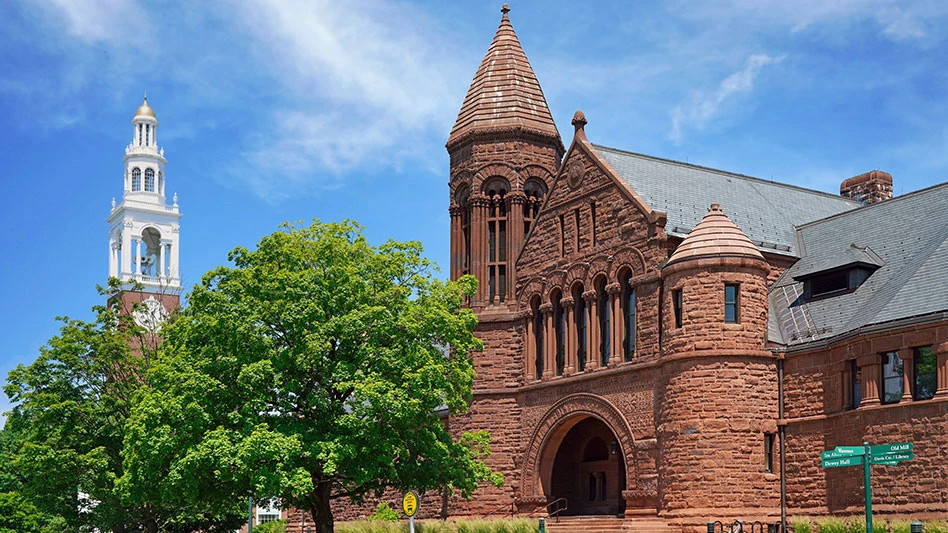
Photo by Nick Schrader, Michigan State University
The Michigan State University (MSU) Surplus Store and Recycling Center located on the campus of MSU in East Lansing, Michigan, recently installed a robotic sorter to improve safety for its workers.
“Our main goal when purchasing this sorter was to reduce the risk of illness or injury at our material recovery facility (MRF),” says David Smith, the recycling director for the facility. “We’re not like a larger facility; we sort everything by hand, and this will reduce injuries that could pop up because of it.”
The recycling center primarily serves the campus of MSU. The 18,758-square-foot facility employs three full-time workers and 20 part-time students. The MRF processes up to 9 million pounds of materials annually, including plastic, metal, fiber and glass for the campus, Smith says.
The sorter was purchased from Amp Robotics and can make 80 picks per minute. Smith says the sorter can learn about regional items not common in other recycling streams as well. This includes things such as the campus’ square orange juice refill containers, which are prevalent at MSU but not everywhere else. That information is then sent to a global database for the robotics to learn from and adapt to for future use.
Smith says the facility bought the $250,000 sorter through a grant from the Michigan Department of Environmental Quality’s Environment, Great Lakes, and Energy (EGLE).
Smith began researching robotic sorters two years ago when his manual sorters came across a bottle filled with a controlled substance. The bottle was removed safely, but if it broke, it could have had serious ramifications for the facility, Smith says.
“We run objects down the line, and we hand sort it. Although we have a clean stream, we still get sharp objects or medical waste sometimes. We wear gloves that protect us, but we’re still vulnerable to cuts and other safety issues,” Smith says. “We don’t have many accidents.”
Other reasons the MRF purchased the robotic sorter include increasing productivity, expanding the facility’s collection capabilities and improving recycling education for students and professors on campus.
“We wanted to make this facility a living, learning laboratory for our faculty and students. We have some professors that are anxious to look at it and see how to incorporate it into their classrooms,” Smith says. “This sorter will also help us generate new streams for this facility.”
The robotic sorter also helps ease some issues caused by the hiring crisis impacting the waste and recycling industry. Currently, the sorter serves as the MRF’s primary sorter on its plastic and metal line.
“The sorters can replace up to four people working at the MRF,” Smith says. “Right now, we’re only replacing two of our workers, but that could change in the future.”
Latest from Recycling Today
- ASEAN Circular Plastics Summit sets agenda
- Ferrous market upward price momentum continues into March
- Komatsu adds two wheel loaders to product line
- Amcor, Berry Global receive US antitrust clearance
- Sonoco to increase prices for URB, converted paperboard products
- Indiana awards recycling grant to EMCO
- Louisiana city launches glass recycling program
- Xycle secures financing for commercial-scale plastics recycling plant






